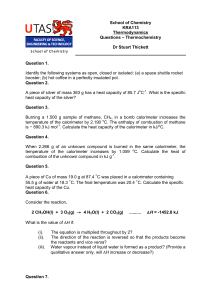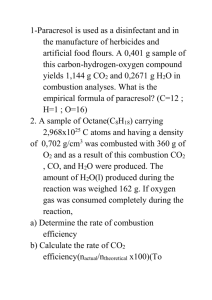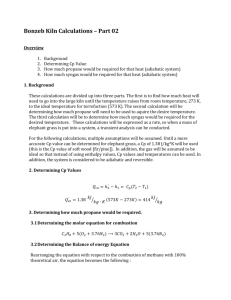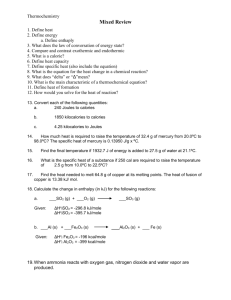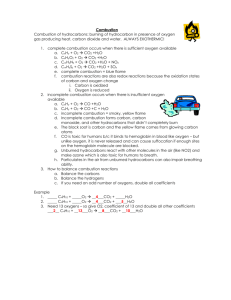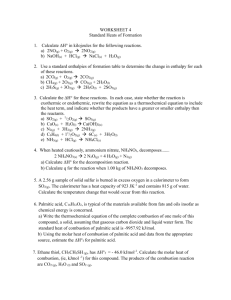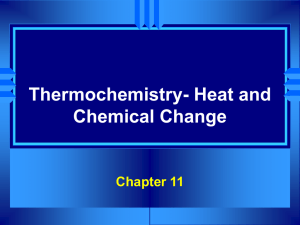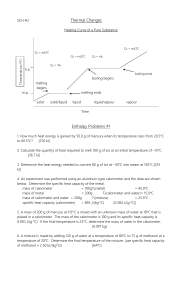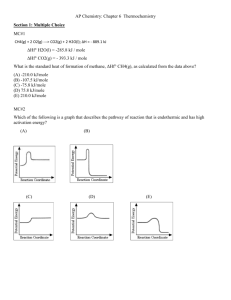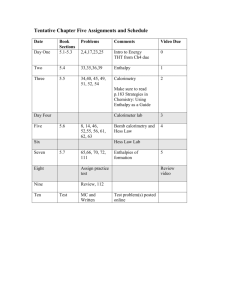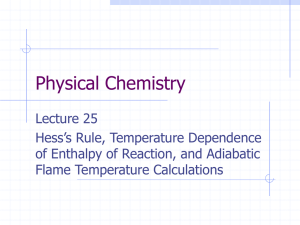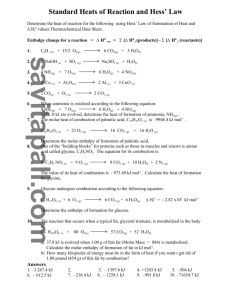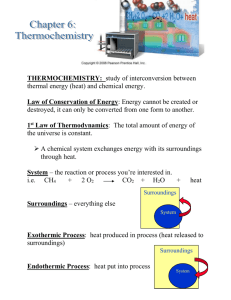Review Ch5&19 + answers
advertisement
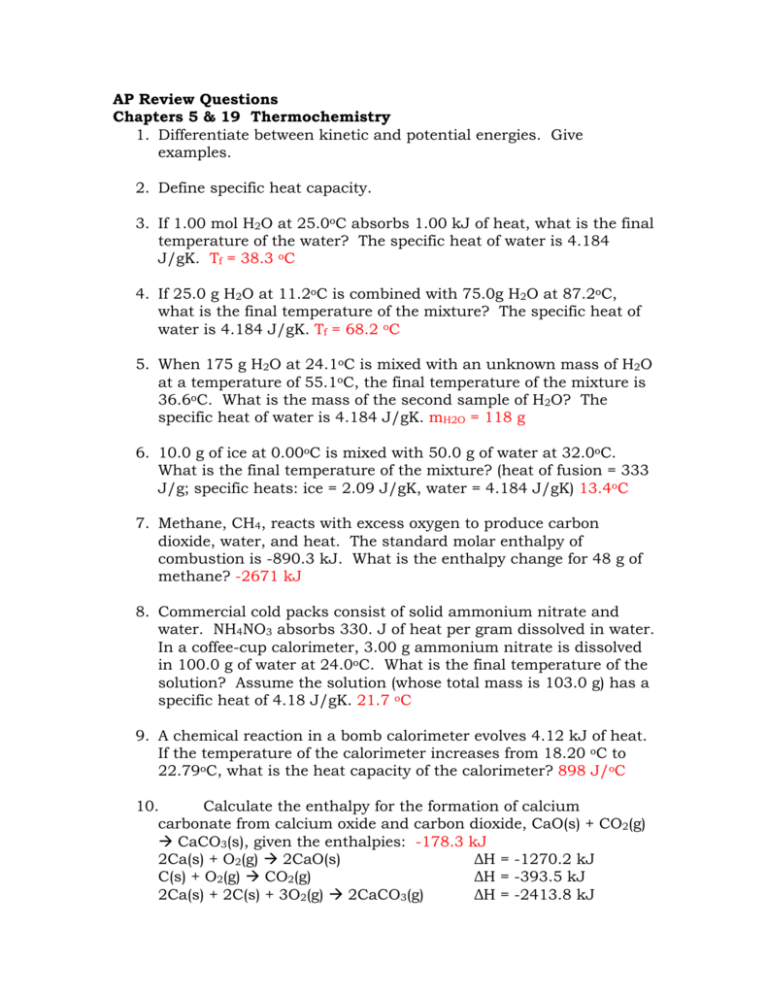
AP Review Questions Chapters 5 & 19 Thermochemistry 1. Differentiate between kinetic and potential energies. Give examples. 2. Define specific heat capacity. 3. If 1.00 mol H2O at 25.0oC absorbs 1.00 kJ of heat, what is the final temperature of the water? The specific heat of water is 4.184 J/gK. Tf = 38.3 oC 4. If 25.0 g H2O at 11.2oC is combined with 75.0g H2O at 87.2oC, what is the final temperature of the mixture? The specific heat of water is 4.184 J/gK. Tf = 68.2 oC 5. When 175 g H2O at 24.1oC is mixed with an unknown mass of H2O at a temperature of 55.1oC, the final temperature of the mixture is 36.6oC. What is the mass of the second sample of H2O? The specific heat of water is 4.184 J/gK. mH2O = 118 g 6. 10.0 g of ice at 0.00oC is mixed with 50.0 g of water at 32.0oC. What is the final temperature of the mixture? (heat of fusion = 333 J/g; specific heats: ice = 2.09 J/gK, water = 4.184 J/gK) 13.4oC 7. Methane, CH4, reacts with excess oxygen to produce carbon dioxide, water, and heat. The standard molar enthalpy of combustion is -890.3 kJ. What is the enthalpy change for 48 g of methane? -2671 kJ 8. Commercial cold packs consist of solid ammonium nitrate and water. NH4NO3 absorbs 330. J of heat per gram dissolved in water. In a coffee-cup calorimeter, 3.00 g ammonium nitrate is dissolved in 100.0 g of water at 24.0oC. What is the final temperature of the solution? Assume the solution (whose total mass is 103.0 g) has a specific heat of 4.18 J/gK. 21.7 oC 9. A chemical reaction in a bomb calorimeter evolves 4.12 kJ of heat. If the temperature of the calorimeter increases from 18.20 oC to 22.79oC, what is the heat capacity of the calorimeter? 898 J/oC 10. Calculate the enthalpy for the formation of calcium carbonate from calcium oxide and carbon dioxide, CaO(s) + CO2(g) CaCO3(s), given the enthalpies: -178.3 kJ 2Ca(s) + O2(g) 2CaO(s) ΔH = -1270.2 kJ C(s) + O2(g) CO2(g) ΔH = -393.5 kJ 2Ca(s) + 2C(s) + 3O2(g) 2CaCO3(g) ΔH = -2413.8 kJ 11. The standard enthalpy of formation of CO2(g) is -393.5 kJ. What is the enthalpy change if 4.49 g C(s) reacts with 9.21 g O2(g) to form CO2(g)? -113 kJ 12. Of the following product-favored processes, which are endothermic? 1. the combustion of methane to produce water and carbon dioxide 2. the expansion of an ideal gas 3. the melting of ice at temperatures greater than 0 degrees C 13. Calculate the standard molar entropy change for the combustion of methane. -5.2 J/K CH4(g) + 2 O2(g) CO2(g) + 2H2O(g) Species S۫ (J/K x mol) CH4(g) 186.3 O2(g) 205.1 CO2(g) 213.7 H2O(g) 188.8 14. Predict the signs of ΔH, ΔS, and ΔG for the combustion of hydrogen gas at 25 ۫C. 2 H2(g) + O2(g) 2 H2O(l) 15. For a reaction, ΔH=+265 kJ and ΔS=+271.3 J/K. At what temperature will ΔG=0.00? 977 K 16. Calculate ΔG۫rxn for the reaction below at 25.0oC given ΔHorxn = -1203.4 kJ and ΔSorxn = -216.6 J/K. Mg(s) + O2(g) 2MgO -1139 kJ 17. Calculate ΔGorxn given SO2(g) + ½O2(g) SO3(g) -70.9 kJ
